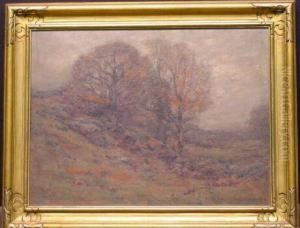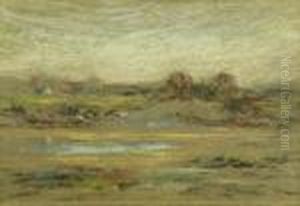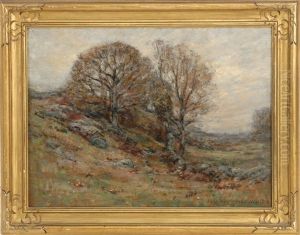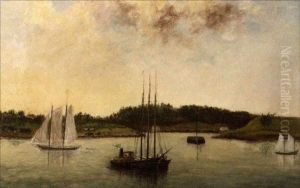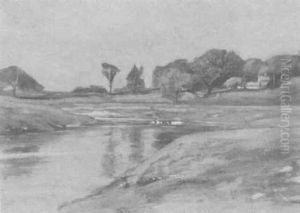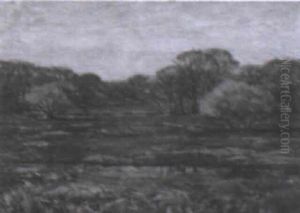Henry Cook White Paintings
Henry Cooke White was an American painter, watercolorist, and educator born on August 22, 1861, in Hartford, Connecticut. His artistic journey began in his hometown but eventually led him to expand his horizons across the United States and Europe. White was known for his landscapes, marine paintings, and particularly for his mastery in watercolor, a medium through which he conveyed the delicate interplay of light and color in nature. His work reflects an era of American art that was exploring its identity and expressions distinct from European traditions, yet still deeply influenced by them, especially the Impressionist movement.
White's education in art started with his studies under Dwight Tryon at the Smith College in Northampton, Massachusetts, and later with Thomas Robinson in New York. Determined to refine his craft, he traveled to Europe, studying at the Académie Julian in Paris, a pivotal experience that exposed him to the forefront of artistic innovation of his time. Despite his European training, White's work remained deeply rooted in the American landscape, capturing its vastness and diversity with a sensitive palette and a keen eye for natural beauty.
Throughout his career, White was an active participant in the American art scene, contributing to and being recognized by various institutions. He was a member of the National Academy of Design, the American Watercolor Society, and the Connecticut Academy of Fine Arts, among others. His work was widely exhibited and collected, receiving numerous awards that testified to his skill and impact as an artist.
Beyond his achievements on the canvas, White played a significant role in art education, believing in the importance of nurturing new talent and sharing his passion for the natural world. He taught at the Hartford Art School, influencing a generation of artists with his emphasis on observation and the importance of translating personal vision into art.
Henry Cooke White passed away on July 8, 1952, leaving behind a legacy that not only resides in his contributions to American art but also in the inspiration he provided to countless artists and art lovers. His works remain a testament to the beauty of the American landscape, capturing moments of tranquility and the ephemeral qualities of light and color that continue to captivate viewers.
